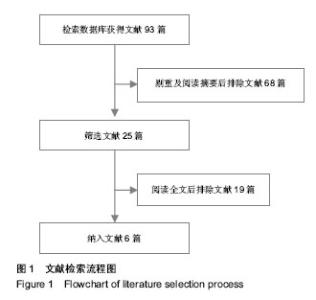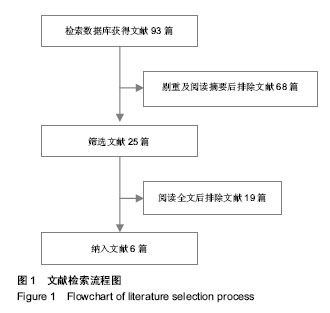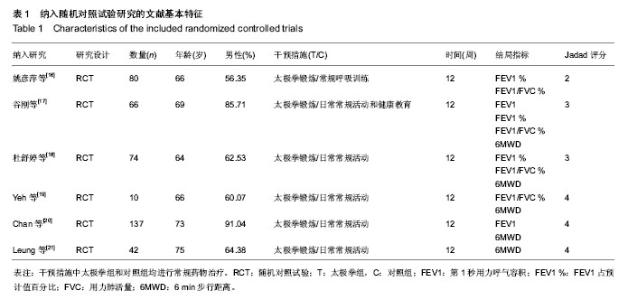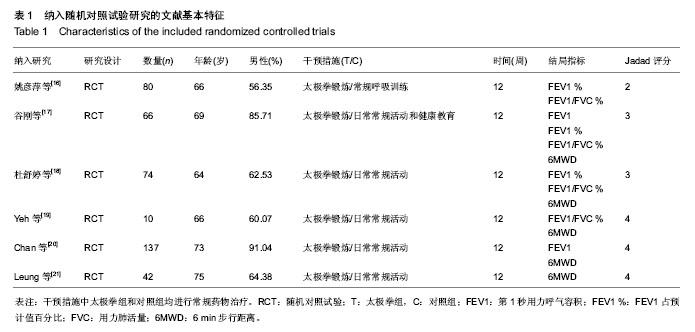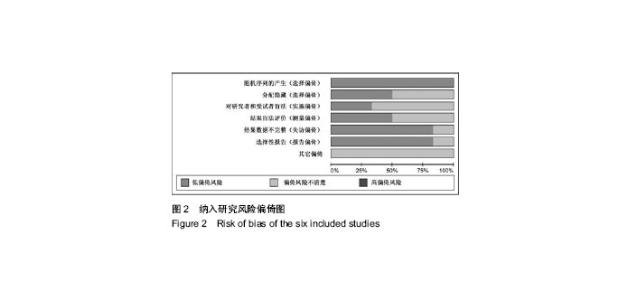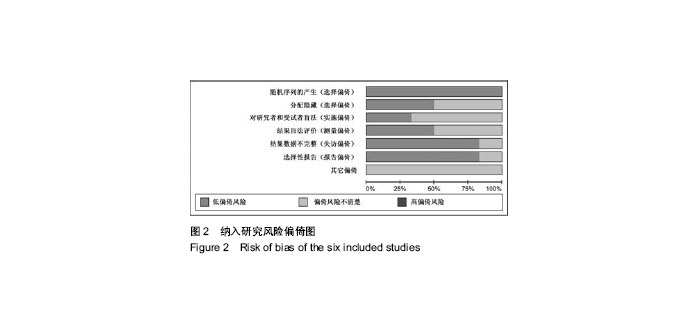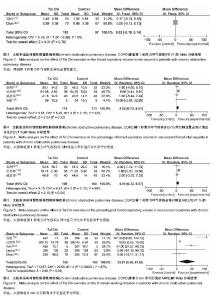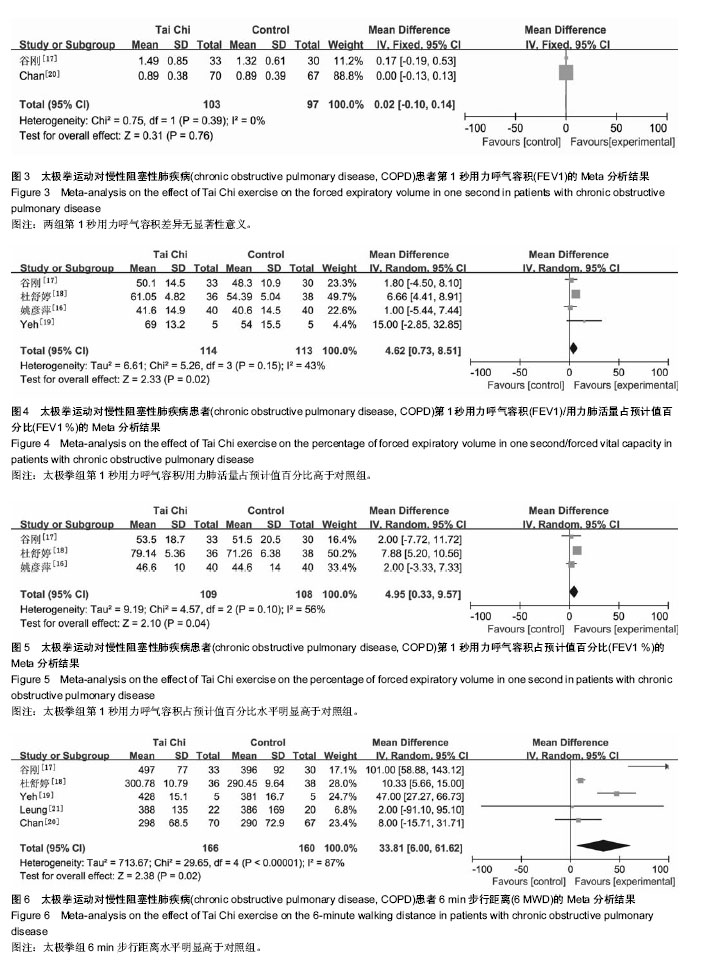| [1] 中华医学会呼吸病学分会慢性阻塞性肺疾病学组. 慢性阻塞性肺疾病诊治指南(2007年修订版)[J].中华结核和呼吸杂志,2007, 30(1):8-17.
[2] Fabbri LM, Hurd SS. Global strategy for the diagnosis, management and prevention of COPD: 2003 update. Eur Respir J. 2003;22(1):1-2.
[3] Nici L, Donner C, Wouters E, et al. American thoracic society/ european respiratory society statement on pulmonary rehabilitation. Am J Respir Crit Care Med. 2006;173(12):1390- 1413.
[4] Burtin C, Saey D, Saglam M, et al. Effectiveness of exercise training in patients with COPD: the role of muscle fatigue. Eur Respir J. 2012;40(2):338-344.
[5] Zwerink M, van der Palen J, van der Valk P, et al. Relationship between daily physical activity and exercise capacity in patients with COPD. Respir Med. 2013;107(2):242-248.
[6] Petrovic M, Reiter M, Zipko H, et al. Effects of inspiratory muscle training on dynamic hyperinflation in patients with COPD. Int J Chron Obstruct Pulmon Dis. 2012;7:797-805.
[7] Spruit MA, Polkey MI, Celli B, et al. Predicting outcomes from 6-minute walk distance in chronic obstructive pulmonary disease. J Am Med Dir Assoc. 2012;13(3):291-297.
[8] Puhan MA, Mador MJ, Held U, et al. Interpretation of treatment changes in 6-minute walk distance in patients with COPD. Eur Respir J. 2008;32(3):637-643.
[9] Spruit MA, Polkey MI. T'ai chi for individuals with COPD: an ancient wisdom for a 21st century disease? Eur Respir J. 2013;41(5):1005-1007.
[10] Yan JH, Guo YZ, Yao HM, et al. Effects of tai chi in patients with chronic obstructive pulmonary disease: preliminary evidence. PLoS One. 2012;8(4):e61806.
[11] Pan L, Yan J, Guo Y, et al. Effects of Tai Chi training on exercise capacity and quality of life in patients with chronic heart failure: a meta-analysis. Eur J Heart Fail. 2013;15(3): 316-323.
[12] 张立华,吴建军,王志程.二十四式太极拳结合呼吸康复训练对慢性阻塞性肺疾病患者肺功能及生活质量的影响[J].上海中医药大学学报,2012,2(4):53-56.
[13] Yeh GY, Roberts DH, Wayne PM, et al. Tai chi exercise for patients with chronic obstructive pulmonary disease: a pilot study. Respir Care. 2010;55(11):1475-1482.
[14] Jadad AR, Moore RA, Carroll D, et al. Assessing the quality of reports of randomized clinical trials: is blinding necessary? Control Clin Trials. 1996;17(1):1-12.
[15] Higgins JPT, Green S. Cochrane Handbook for Systematic Reviews of Interventions Version 5.1.0 [updated March 2011]. The Cochrane Collaboration, 2011. Available from www.cochrane-handbook.org.
[16] 姚彦萍.太极拳对慢性阻塞性肺疾病康复疗效观察[J].中国康复理论与实践,2004,10(7):439-440.
[17] 谷刚,周玉民,王大礼,等.简易太极拳锻炼对慢性阻塞性肺疾病患者运动耐力和生活质量的影响[J].中华医学杂志,2012,92(14): 952-955.
[18] 杜舒婷,丁连明,王春霞,等.太极拳运动对慢性阻塞性肺疾病患者运动耐力及肺功能的影响[J].中国康复医学杂志,2013,28(4): 374-376.
[19] Yeh GY, Roberts DH, Wayne PM, et al. Tai Chi exercise for patients with chronic obstructive pulmonary disease: a pilot study. respir care. 2010;55(11):1475-1482.
[20] Chan AW, Lee A, Suen LK, et al. Tai chi Qigong improves lung functions and activity tolerance in COPD clients: a single blind, randomized controlled trial. Complement Ther Med. 2011; 19(1): 3-11.
[21] Leung RW, McKeough ZJ, Peters MJ, et al. Short-form Sun-style tai chi as an exercise training modality in people with COPD. Eur Respir J. 2013;41(5):1051-1057.
[22] Beauchamp MK, Nonoyama M, Goldstein RS, et al. Interval versus continuous training in individuals with chronic obstructive pulmonary disease: a systematic review. Thorax. 2010;65(2):157-164.
[23] Strasser B, Siebert U, Schobersberger W. Effects of resistance training on respiratory function in patients with chronic obstructive pulmonary disease: a systematic review and meta-analysis. Sleep Breath. 2013;17(1):217-226.
[24] 陈锦秀,邓丽金.传统“六字诀呼吸操”对COPD稳定期患者的康复效果[J].中国康复医学杂志,2009,24(10):944-945.
[25] 刘素荣,陈云凤.健身气功八段锦对慢性阻塞性肺疾病稳定期患者肺功能近期疗效观察[J].华西医学,2012,27(8):1248-1250.
[26] Gosselink R. Breathing techniques in patients with chronic obstructive pulmonary disease. Chron Respir Dis. 2004;1(3): 163-172.
[27] Spahija J, Marchie M, Grassino A. Effects of imposed pursed-lips breathing on respiratory mechanics and dyspnea at rest and during exercise in COPD. Chest. 2005;128(2): 640-650.
[28] Ng BH, Tsang HW, Jones AY, et al. Functional and psychosocial effects of health Qigong in patients with COPD: a randomized controlled trial. J Altern Complement Med. 2011; 17(3):243-251.
[29] Tsiligianni I, Kocks J, Tzanakis N, et al. Factors that influence disease-specific quality of life or health status in patients with COPD: a review and meta-analysis of pearson correlations. Prim Care Respir J. 2011;20(3):257-268.
[30] Remels AH, Gosker HR, Velden J, et al. Systemic inflammation and skeletal muscle dysfunction in chronic obstructive pulmonary disease: state of the art and novel insights in regulation of muscle plasticity. Clin Chest Med. 2007;28(3):537-552.
[31] Schraufnagel DE, Blasi F, Kraft M, et al. An official American Thoracic Society/European Respiratory Society policy statement: disparities in respiratory health. Am J Respir Crit Care Med. 2013;188(7):865-871.
[32] O’Shea SD, Taylor NF, Paratz JD. Progressive resistance exercise improves muscle strength and may improve elements of performance of daily activities for people with COPD: a systematic review. Chest. 2009;136(5):1269-1283.
[33] Benton MJ, Wagner CL. Effect of single-set resistance training on quality of life in COPD patients enrolled in pulmonary rehabilitation. Respir Care. 2013;58(3):487-493. |
